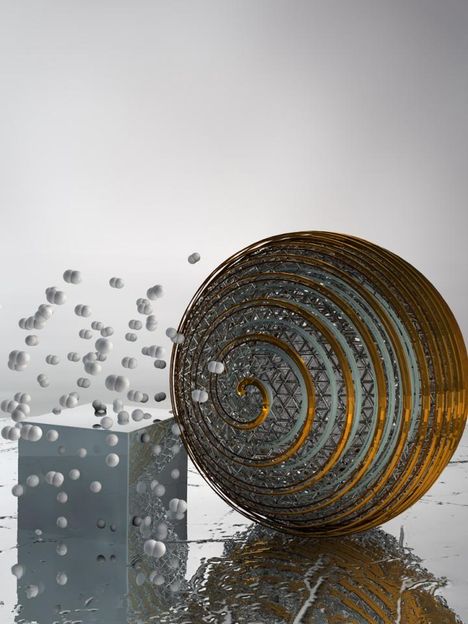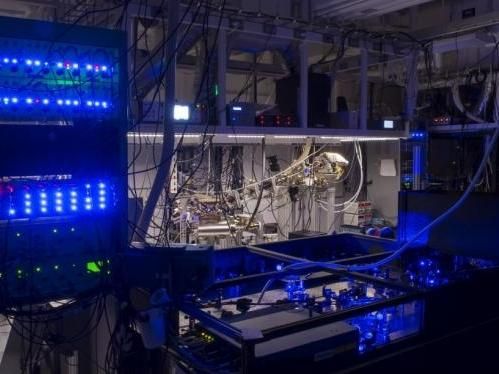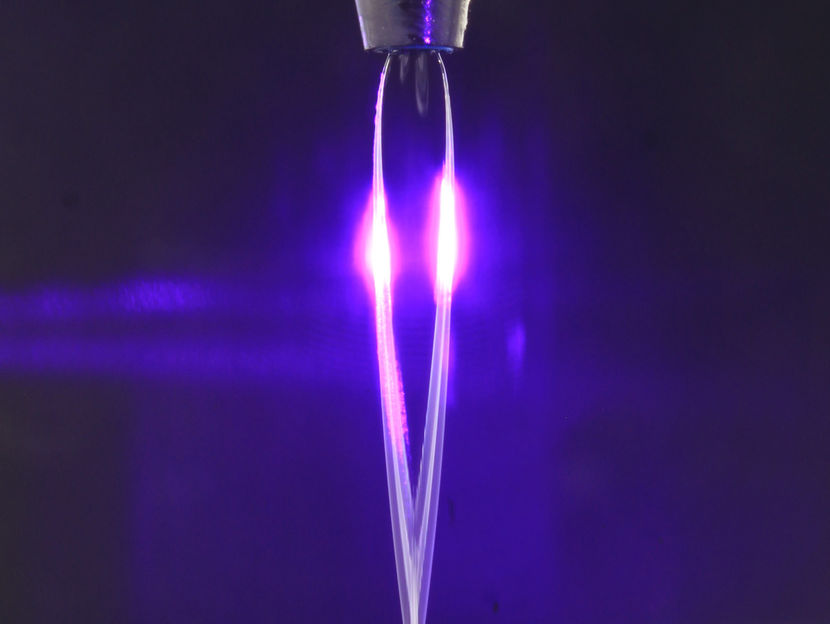Nanoparticles - small but unique
Scientists at Chalmers University of Technology have developed a new way to study nanoparticles one at a time, and have discovered that individual particles that may seem identical in fact can have very different properties.

A single gold plasmonic nanoantenna probes the hydrogen absorption in an adjacent palladium nanocube.
Ella Marushchenko and Alex Tokarev
"We were able to show that you gain deeper insights into the physics of how nanomaterials interact with molecules in their environment by looking at the individual nanoparticle as opposed to looking at many of them at the same time, which is what is usually done," says Associate Professor Christoph Langhammer, who led the project.
By applying a new experimental approach called plasmonic nanospectroscopy, the group studied hydrogen absorption into single palladium nanoparticles. They found that particles with exactly the same shape and size may exhibit differences as great as 40 millibars in the pressure at which hydrogen is absorbed. The development of sensors that can detect hydrogen leaks in fuel cell powered cars is one example of where this new understanding could become valuable in the future.
"One main challenge when working on hydrogen sensors is to design materials whose response to hydrogen is as linear and reversible as possible. In that way, the gained fundamental understanding of the reasons underlying the differences between seemingly identical individual particles and how this makes the response irreversible in a certain hydrogen concentration range can be helpful," says Christoph Langhammer.
Others have looked at single nanoparticles one at a time, but the new approach introduced by the Chalmers team uses visible light with low intensity to study the particles. This means that the method is non-invasive and does not disturb the system it is investigating by, for example, heating it up.
"When studying individual nanoparticles you have to send some kind of probe to ask the particle 'what are you doing?'. This usually means focusing a beam of high-energy electrons or photons or a mechanical probe onto a very tiny volume. You then quickly get very high energy densities, which might perturb the process you want to look at. This effect is minimized in our new approach, which is also compatible with ambient conditions, meaning that we can study nanoparticles one at a time in as close to a realistic environment as possible", says Christoph Langhammer.
Original publication
Svetlana Syrenova, Carl Wadell, Ferry A. A. Nugroho, Tina A. Gschneidtner, Yuri A. Diaz Fernandez, Giammarco Nalin, Dominika Świtlik, Fredrik Westerlund, Tomasz J. Antosiewicz, Vladimir P. Zhdanov, Kasper Moth-Poulsen & Christoph Langhammer; "Hydride formation thermodynamics and hysteresis in individual Pd nanocrystals with different size and shape" Nature Materials; 2015
Other news from the department science
Most read news
More news from our other portals
See the theme worlds for related content
Topic world Sensor technology
Sensor technology has revolutionized the chemical industry by providing accurate, timely and reliable data across a wide range of processes. From monitoring critical parameters in production lines to early detection of potential malfunctions or hazards, sensors are the silent sentinels that ensure quality, efficiency and safety.

Topic world Sensor technology
Sensor technology has revolutionized the chemical industry by providing accurate, timely and reliable data across a wide range of processes. From monitoring critical parameters in production lines to early detection of potential malfunctions or hazards, sensors are the silent sentinels that ensure quality, efficiency and safety.































































